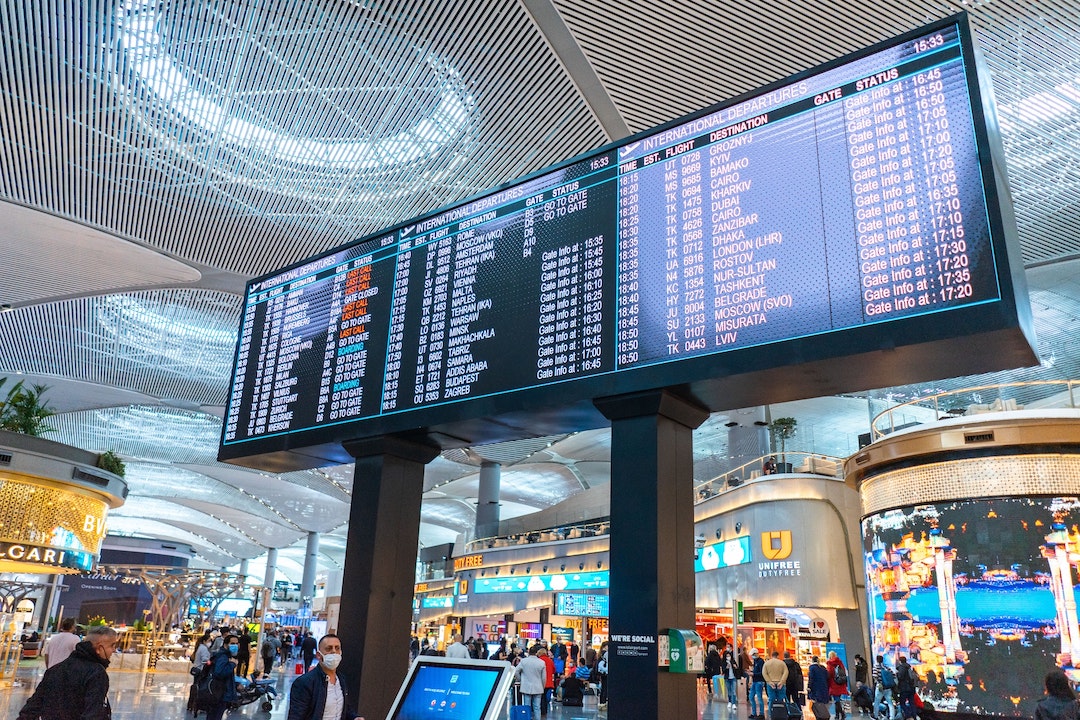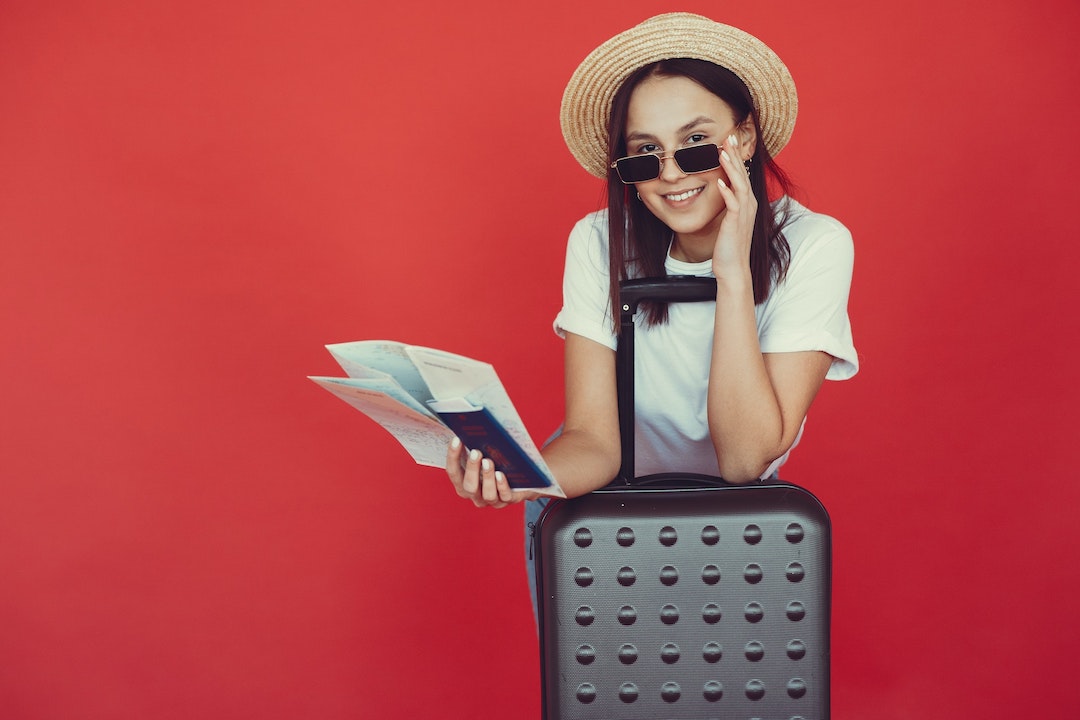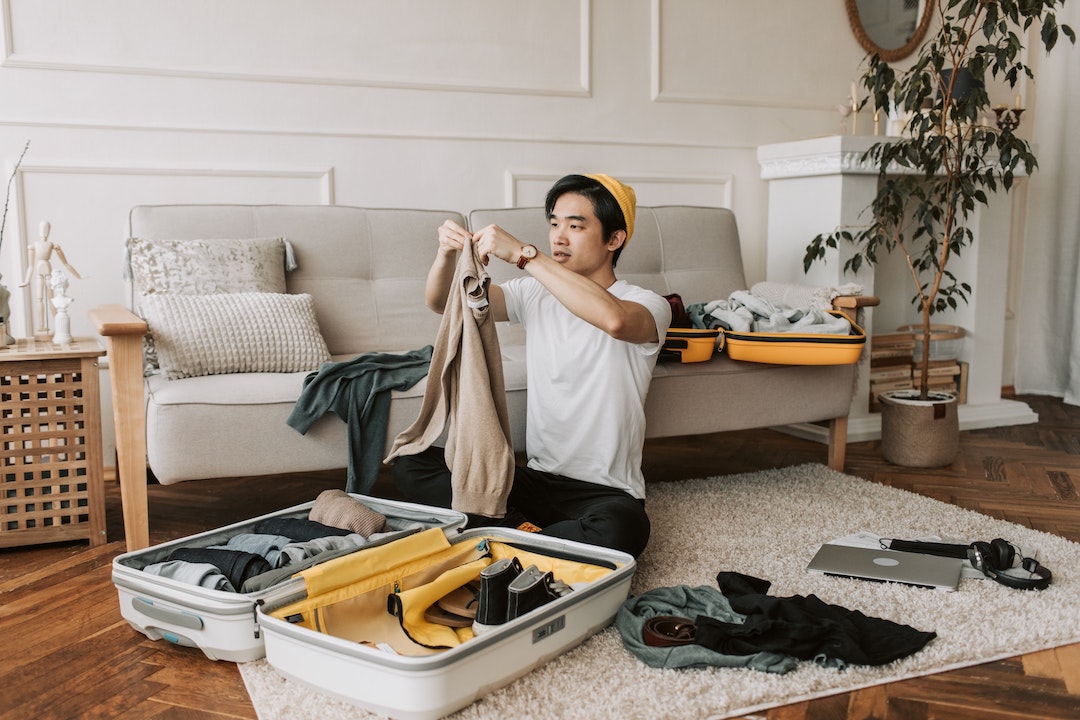The needs of a digital nomad are different from those of travelers who are not working as they visit different places, or people who are on vacation for a considerably shorter period of time. There are several logistical and lifestyle considerations that need to be thought about before making your first trip as a digital nomad.
Safety

Take a look at the statistics on safety for the location you’re considering visiting. Lots of people paint certain areas with a wide brush, cautioning how unsafe a particular destination might be when that might not be the case. Take a look at data for the country as a whole, and also the city you are interested in visiting. Investigate if certain neighborhoods are considered safer than others, if you should take extra precautions walking around at night, and if travelers to a location are advised to conceal their valuables while they are there.
Internet Access

Some locations have better internet than others, and you’ll want to look into internet reliability and speeds before traveling to a location since it’s crucial for getting your work done. Another thing to keep in mind is that some regions of the world have a real threat of blackouts which either occur routinely or may occur as a result of political unrest. Do your research ahead of time in order to prepare. You may decide to avoid a location if it seems like Internet availability there might not meet your needs.
Wherever you travel, it is a good idea to try to get a SIM card with data so that you can use it in a pinch, whether you are on the go and there is no wi-fi available, or if the wi-fi you have been using suddenly becomes less reliable.
Timing of Your Trip

Timing is a critical component to making your digital nomad trip go smoothly. You’ll want to consider your travel pace, approximately when your trip may take place, and any time zone differences between your home country, your colleagues’ time zones, and the time zones of the places you are thinking about visiting during your trip.
Travel Pace
Even if you do give up your current residence and fully commit to digital nomading, keep in mind that when you start digital nomading, you shouldn’t be embarking on a period of constant moving week-to-week for a period of months. I moved frequently when I started nomading but eventually realized that I needed to go much slower in order to get familiar with a new place, have time to see attractions, get work done, and plan the logistics of getting to the next destinations. I recommend staying in most places you visit for a minimum of three weeks, especially when starting out, in order to adapt to the new lifestyle and to get your bearings.
Some first time nomads are excited about the idea of going away from their home country for months at a time. This can be invigorating, but months on the road can be exhausting and could lead to burn out. You might not want to plan on being gone for a full year the first time you nomad.
When You’ll Travel
If you go to a location in the winter, you’ll have less daylight and won’t get to see as much before it gets dark. On the other hand, many locations that experience four seasons tend to have an increase of tourists during the warmer seasons — traveling in the winter could mean lower costs and less crowds. Similar considerations apply if you visit places that experience rainy and dry seasons. It’s important to keep in mind holidays, both in your home country, as well as the countries you are considering visiting. You may want to be home during certain holidays in your home country, and may either be excited about or want to avoid visiting certain places during major holidays.
Time Zones
The time zone of the location you are working in is a huge consideration. Some nomads prefer working in the same or similar time zones as their colleagues. Others don’t mind working further and making adjustments in their sleep cycle and structure of their day. It’s a good idea to consider working in areas that overlap for at least a few hours per day with your colleagues to allow real-time collaboration when needed.
Lifestyle

Give thought to what kind of lifestyle you’ll want to live while abroad. In order to do so, at a minimum, you’ll need to consider the cost of living of places you are interested in, preferences for your accommodation and working, ease of access to services and goods, and logistics for traveling in destinations of interest to you.
Cost of Living
A major factor in how you’ll live while abroad is the cost of living. When I plan a trip, a lower cost of living is often a draw for me. I don’t entirely avoid higher cost of living locations but stay for less time than I do less expensive locations. When planning a trip take a look at the cost of living for the specific cities or towns you’re curious about and pay attention to prices for food and lodging in particular.
Your Accommodation and Workplace
I recommend finding the more central neighborhoods where you’re staying and trying to stay in one of those if they are considered to be safe. This generally costs a bit more, but allows you to make more of the time you have there. Staying somewhere that is a bit further out, but well connected by public transit is also a consideration, especially if you’re going to be staying awhile. I prefer to rent an apartment and often work from there, but many nomads really enjoy both living in and working in shared accommodations. Some hostels or more communal accommodations have quieter common areas with desk space where you can work if that interests you. As an example, I once stayed at Cityhub in Copenhagen and was able to get work done in the shared area near the kitchen with no problem. Additionally, if you have a different working preference and prefer to get out of the house, try to look into local options such as cafes. If you like to work at cafes, try to find out ahead of time if outlets are available at the cafes. Another option, especially common in digital nomad hubs, is to work at local co-working places. This allows you space to work and meet people who are working while traveling as well.
Ease of Travel To Other Locations
Is this destination easy to get to? Are you going to want easy access to others? Certain areas, like parts of Europe, have a myriad of relatively low-cost and frequent connections to nearby places of interest both within and outside a given country. Other areas of the world are expensive to get to and may not have many transit options. As an example, I spent some time in the Caucasus earlier this year and really enjoyed it. I found it easy to travel around the area once I got there, but in my opinion there are relatively few routes and infrequent flights to this area of the world at the moment, making it more difficult to get in and out. Before choosing a destination, consider if you want to visit others on this trip, and investigate the logistics for getting there.
How Much Convenience You Want
In Japan, it’s easy to get an assortment of items for competitive prices. If something’s not available, you can order online and often pick it up at the convenience store a few days later. In other locations, access to items at stores or ordering via e-commerce can be limited. Look into the shopping centers available and the types of stores within them. Also take a look at the feasibility of ordering online and either getting items delivered, or picking them up somewhere near you, in case you need them.
Entry and Exit Requirements

Before you book a ticket, make sure you understand the entry and exit requirements for that country. Some countries require visitors from certain countries to get a visa, while other visitors from different countries can enter visa-free. The process for visas varies widely by country. Some countries allow you to pay for the visa ahead of time and issue you one in a matter of days, or if you pay for an expedited one, hours. Others require you to travel to a regional consulate that might not be particularly close to where you reside to apply for the visa, and then you might have to return on a different day to pick up the visa. You may be required to show certain paperwork, like your boarding pass, when entering a country. Looking into this is very important so that you don’t miss out on your trip.
When leaving a country, you may need to show your visa, so make sure you keep it in a safe place. If you want to travel to other countries, you might also want to take a look at those entry requirements as well. For instance, if you were visiting Thailand and interested in visiting some neighboring countries like Vietnam, getting a visa for Vietnam might require that you have additional passport photos — you may want to have those printed ahead of time. Another thing to keep in mind is that some countries like Colombia require proof of an onward ticket — if you don’t have one, airlines may refuse to allow you to board, so check into this in order to make sure you are prepared before arriving at the airport and don’t have to hastily book a ticket.
What to Bring

This varies quite a bit. I am not a carry-on only packer — for me, the stress outweighs the benefits, particularly when I’m going to be gone for months and traveling through different climates. Lighter is better, but you do want to make sure you have the stuff you need. Often, you don’t need to bring a huge amount of clothes, but if the clothing or shoe sizes you wear are not easy to find in the locations you are considering visiting, make sure to bring enough of those items in case you can’t obtain them with ease locally. Make sure to bring medications — I would recommend bringing some sort of pain relief pills as well as digestive medicines so you have them ahead of time — and fill any necessary prescriptions before you leave. In addition to your computer, phone, and charger, you may want to consider a set of noise-canceling headphones, and I would strongly suggest you bring an external battery pack that could be used to charge your devices on the go. The items I would recommend are:
- External battery pack and/or charging phone case
- Travel adapter and/or travel converter (if you are bringing devices that operate on a different voltage than what’s used in your travel destination)
- Headphones or earbuds
- An electronics organizer
- Unlocked telephone
- A laptop
- If you use a Macbook I would strongly recommend getting Apple’s World Travel Adapter Kit, which will allow you to easily use your adapter in different outlets around the world.
- Larger, carry-on backpack and daypack
- Laundry supplies. I recommend travel laundry detergent strips, color catcher sheets if you might need to wash differently colored clothing together, and possibly a travel laundry line. In many places, dryers aren’t common in residences, even if a washing machine is available in an apartment.
- Pain relief, digestive medicines, preferred menstrual products if needed, and any prescriptions
- Some pens and a small notebook
- Transparent, plastic three-flap enclosed folder for important documents
- Four shirts, four bottoms, five pairs of underwear (2-3 bras if needed), and
five pairs of socks.
- I would recommend giving thought to the material while you are selecting your travel clothing. For instance, synthetic fabrics often can dry quickly but are more prone to forming odors. Merino wool is more expensive and will take longer to dry, but popular among travelers for its temperature regulation and odor resistance.
- A black bathing suit. I love vibrant-colored bathing suits, but black is most versatile, especially if you are considering getting in thermal waters with minerals that could leave stains.
- Sneakers and potentially dressier shoes in case you need to attend an event, maybe sandals if your destination is warm. I’ve worn sneakers made of wool which I liked for traveling primarily in cities, and they can be cleaned by throwing them in the washing machine. My only dislike was the lack of grip. On my most recent trip, I brought hiking sneakers with me instead, which take up less space than hiking boots, but still provide great grip when venturing into the outdoors.
- Travel cubes for improved organization of your clothing
- Toiletries such as toothbrush and toothpaste, shampoo, conditioner, body wash, lotion, and deodorant, preferably in smaller containers. I wouldn’t worry too much about these as generally I’ve mostly been fairly pleased with toiletries for sale locally. The exception would be trying to find deodorant I like and find effective in East Asia.
Before arriving in the country you may want to do some preparation and download apps or information to make your life easier, such as offline maps, translations for languages that are spoken in the locations you’ll be traveling to, and apps for the local rideshare services.
Final Thoughts
Planning your first trip as a digital nomad can be exhausting and maybe overwhelming, but is totally worth it. When considering destinations, keep in mind your requirements for getting work done and balance those with your personal preferences and needs. Research how safe a given location is. Once you have an idea of that, look into how ubiquitous fast, reliable internet is. Then dive more into specifics, including:
- What you might be interested in seeing
- Where you want to live
- How long you might want to stay there
- Nearby destinations that are appealing to visit afterwards
Don’t overthink and let it derail your trip, keeping these things in mind will help make your digital nomad journey successful.

